So many walks start out similarly: with only a rough plan in mind. On this day, with no hopes other than to put on a few miles, see some new sights, and keep my feet dry, we set off to explore yet one more section of the Lancaster Canal. We had no idea what amazing find we had ahead of us.
Our journey started by hopping a bus to the outskirts of Morcambe. We found our way through Happy Mount Park, clearly aimed at children and families. Obviously, I had to stop and play.
It didn’t occur to me to have my picture taken as I swung on the disk thingie on the end of a zip line, screaming like a mad woman, streaking high above the Earth (I swear, my feet curled up beneath me didn’t even touch the ground). It was such fun, I ran over to the launching pad and did it again (fortunately, it being a cool winter day, I didn’t have to bat any little kids out of the way).
After I caught up to Karen, who had left me in her dust, we broke through a fence (I mean: we found a convenient opening) in search of the canal trail.
Things aren’t looking too promising at this point, but they quickly turn around.
Now, this is what I’m talking about. The canals never fail to impress. The way trees and buildings and light are reflected on the water’s surface is so soothing. The water fowl swim over to us, looking for treats and then quickly buggar off when they aren’t rewarded for their efforts (sorry, birdies, I read that we aren’t supposed to feed you human food). These walks are generally quiet and I get caught up in my thoughts (often something like, “what’s for supper?”… I’m not really that deep).
One side benefit to our more scenic walks is how the view leads to interval training. Not with me? Let me explain. I am inspired to take a zillion pictures along the way. This means that I stop, frame a picture, move, try again, see another good angle, take another… by now, Karen is long gone and I am forced to run to catch up with her. Interval training! Thank you for your positive feedback on my pictures; you are contributing to my physical well-being.
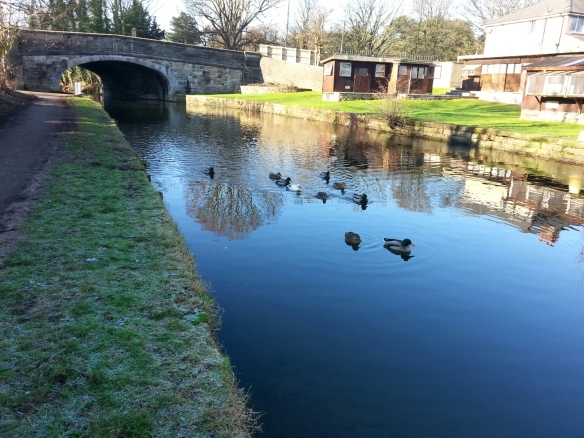
Walking these canal towpaths is one of the highlights of our walks in the UK. Wouldn’t it be amazing to have such idyllic views just over the back fence? It really was at this exact point in our walk that I started to wonder about the canals and pathways and who maintains them; I owe them a great debt of gratitude.
Recently my friend, Leona, asked a few questions about the canals and their history, so I was further inspired to learn a little bit more. Part of this education program includes the fabulous tv show, Great Canal Journeys hosted by couple Timothy West and Prunella Scales. We follow these famous actors’ travels along the canals and learn a tremendous amount on the way. Just one more example of the fantastic programming we are enjoying in the UK.
Originally, there was nothing recreational about life on these waterways. The canals or ‘cuts’ were carved into the earth to enable the transportation of goods. Most often, goods traveled from where they had been produced or mined to the docks in London, Liverpool, Barrow and so on. Locks were added to allow for the changes in elevation along the routes. Bridges were added so roadways could cross over and to allow the canals to pass through walls of rock.
Let’s back up to the 18th century when this building took place. No heavy equipment, no mechanization, no labour safety protections. Just hard, dangerous physical labour. Heavy horses traveled the towpaths and hauled the boats along the shallow waterways. (Oh! That’s why they are called towpaths! Head slap.) Where bridges had been built without room for a towpath, the horses were unhooked, and ‘leggers’ would do the job. Picture this, if you can: men would lie on the tops of the narrow boats, with legs extended and feet on the inside walls of the bridge, they would ‘walk’ to propel the load through. Good grief! I think I’ll stick to my photography-induced-interval-training.
So, here we are, gawking around at the pretty scenery when all of a sudden, the shore sort of slipped away. We are on the towpath, but there’s nothing beneath us.. no, there is, there’s a river. We have just unknowingly stumbled upon the Lune Aqueduct!
Not only does this structure provide beautiful views and photo opps for us, it is an engineering wonder dating back to 1797. Of course, the Romans had been whipping together these water moving systems for ages, but I’ve never stepped foot on one before, so this is officially the first and most marvelous to me. At 16 metres (53 feet) above the River Lune, the aqueduct stretches 202 metres (662 feet) across. Remember, this structure is almost 220 years old!
Planned and built with the intent of providing a crucial link for the canal systems from Wigan and Preston, in the south, to Kendal, in the north, the project went over-budget (something that would surely never happen now), and progress was halted. The aqueduct was useless until 2002 when the final link to the canal system was built. It may not have served the intended purpose of transporting coal and limestone from A to B, but it is a thing of beauty and certainly adds to the current-day use of the canal system.
By the 1950s, canals were no longer being used for the transportation of goods. 2,000 miles of canals and rivers, as well as bridges, embankments, towpaths, aqueducts, docks and reservoirs in England and Wales could easily have been forgotten and allowed to crumble away. Enter The Canal & River Trust, charitable donations, and the efforts of thousands of volunteers, and these resources are available for all to enjoy. Not only are the canals very well used for recreational walking, boating, and enjoying nature, but many people call them home. Full-timers travel the canals, mooring in cities and villages along the way (now officially added to my list of house-sit locations to try out).
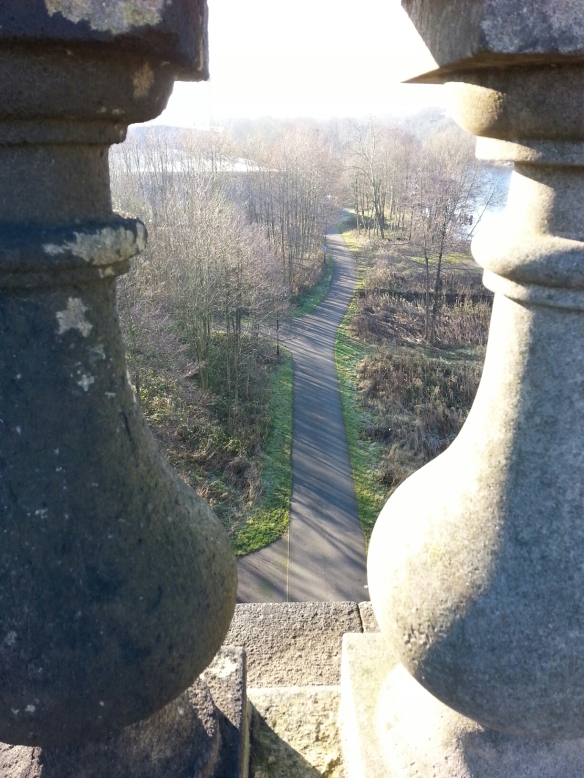
We (and, by “we”, I mean Karen) spied the path along the river which would lead us back to Lancaster.
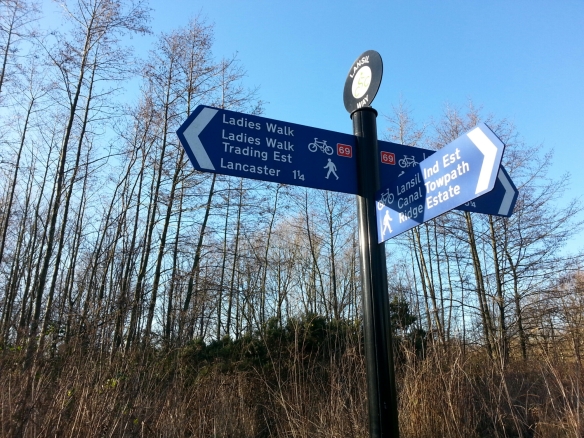
Ah, yes, the ‘Ladies Walk’. Clearly, we found the right path for us.


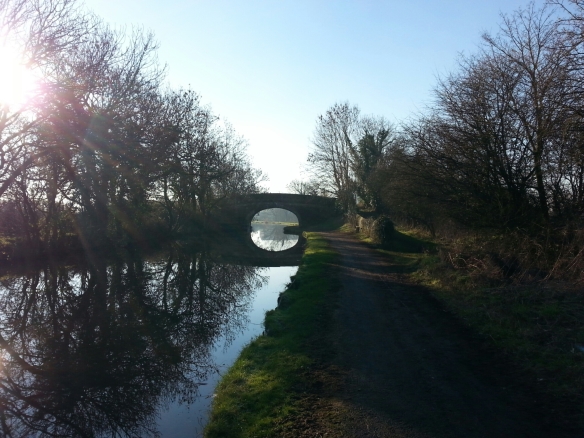
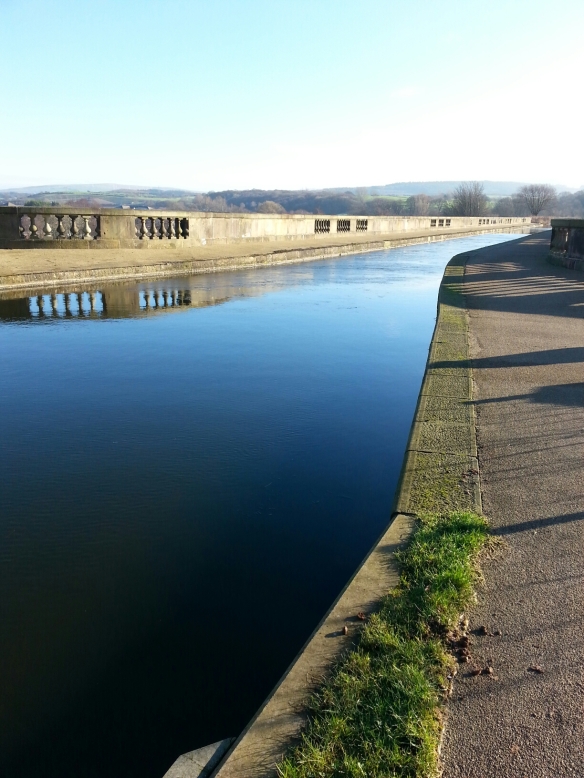
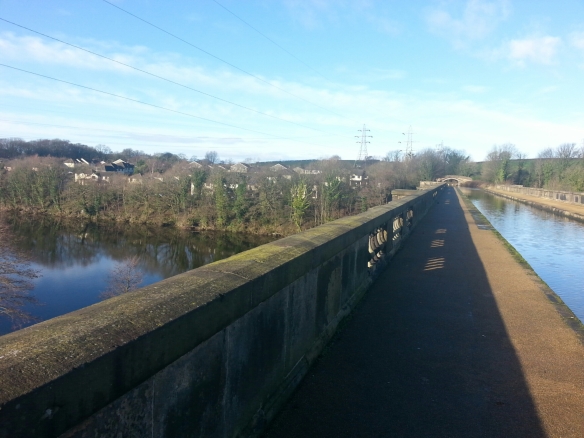

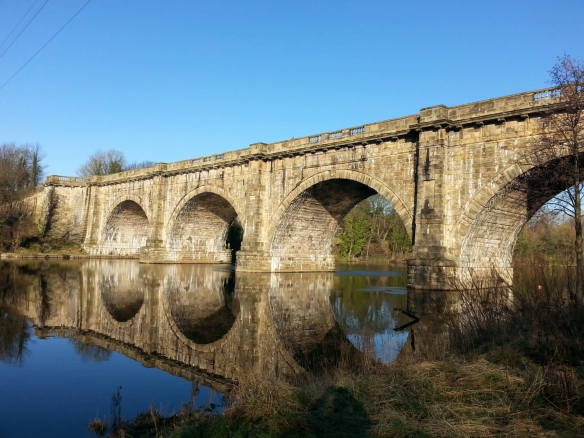
220 years old and it doesn’t look like there’s a brick out of place. Amazing!
LikeLike
Hahahaha…..ladies walk…nice. I have a great visual of Karen striding ahead, eyes rolling.. as you cavort on kid’s playground structures and stop to take endless photos (thanks though!)
LikeLike
Leah,
Your photos are awesome. The workmanship of the trades folks 220 years ago. WOW Today’s engineers should really pay attention.
LikeLike
Gorgeous pictures!
LikeLike
Fascinating! I’ve seen canals in BBC shows, but didn’t know their history at all. Love the bit about the workers “walking” the barges under the bridges, and I laughed when you said, “often something like, “what’s for supper?”… I’m not really that deep.” I can relate!
LikeLike
You nailed it!
LikeLike
Not deep, but focused on the important things, right?
LikeLiked by 1 person
Well… all but the bit about going over budget. That bit, they’ve got down!
LikeLike
thanks for the gorgeous photos and history lesson. So interesting!
LikeLike
Happy to have you along on the trip, Shelley.
LikeLike
All around us, we see such old things that hold up beautifully.
LikeLike
your picture between the columns looks like a quilt opportunity!
LikeLike
Thanks!
LikeLike
Heh, you are right, Georganne!
Of course, you know that by the time I took the picture and ran down the stairs, K was 1/2 way down the path to Lancaster!
LikeLike
I enjoyed your walk vicariously – and thanks for all the lovely pictures (with all the associated exercise!)
Thanks also for stopping by my blog.
LikeLike
I’m glad you enjoyed the trip. Feel free to indulge in a post-walk treat!
LikeLiked by 1 person
Thank you for taking me along on this beautiful walk from the comfort of my chair and with my morning coffee. I enjoyed learning some of the history and your photos are stellar. I particularly like the one of the Roman Aqueduct and that perfect reflection of the arches in the water.
LikeLike
Another beautiful walk for the books!
LikeLiked by 1 person
As a full-blown extrovert, I am quite pleased to have so many people joining me on these walks. Also pleased that the history lessons are enjoyable… even if yoy do need caffiene to get your through them. Ha
LikeLiked by 1 person
Ha ha. It was still dark here as I was reading your post.
LikeLike
Love the photos Leah.
LikeLike
Thank you! I love taking them and taking them and taking them. It’s a miracle we ever get anywhere.
LikeLike
Beautiful places you are getting to visit. Love your pictures and posts.
LikeLike
Thanks. I feel very fortunate to have the chance to see so many great places.
LikeLiked by 1 person